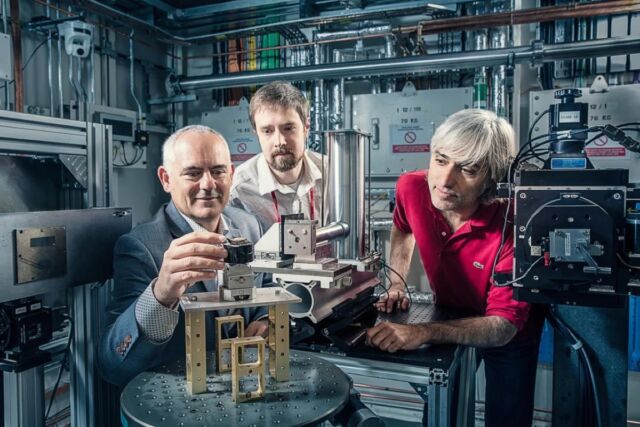Trio wins $700K Vesuvius Challenge grand prize for deciphering ancient scroll
Vesuvius Challenge
Last fall we reported on the use of machine learning to decipher the first letters from a previously unreadable ancient scroll found in an ancient Roman villa at Herculaneum—part of the 2023 Vesuvius Challenge. Tech entrepreneur and challenge co-founder Nat Friedman has now announced via X (formerly Twitter) that they have awarded the grand prize of $700,000 for producing the first readable text. Three winning team members are Luke Farritor, Yousef Nader, and Julian Schilliger.
As previously reported, the ancient Roman resort town Pompeii wasn’t the only city destroyed in the catastrophic 79 AD eruption of Mount Vesuvius. Several other cities in the area, including the wealthy enclave of Herculaneum, were fried by clouds of hot gas called pyroclastic pulses and flows. But still, some remnants of Roman wealth survived. One palatial residence in Herculaneum—believed to have once belonged to a man named Piso—contained hundreds of priceless written scrolls made from papyrus, singed into carbon by volcanic gas.
The scrolls stayed buried under volcanic mud until they were excavated in the 1700s from a single room that archaeologists believe held the personal working library of an Epicurean philosopher named Philodemus. There may be even more scrolls still buried on the as-yet-unexcavated lower floors of the villa. The few opened fragments helped scholars identify a variety of Greek philosophical texts, including On Nature by Epicurus and several by Philodemus himself, as well as a handful of Latin works. But the more than 600 rolled-up scrolls were so fragile that it was long believed they would never be readable since even touching them could cause them to crumble.
Brent Searles’ lab at the University of Kentucky has been working on deciphering the Herculaneum scrolls for many years. He employs a different method of “virtually unrolling” damaged scrolls, which he used in 2016 to “open” a scroll found on the western shore of the Dead Sea, revealing the first few verses from the book of Leviticus. The team’s approach combined digital scanning with micro-computed tomography—a noninvasive technique often used for cancer imaging—with segmentation to digitally create pages, augmented with texturing and flattening techniques. Then they developed software (Volume Cartography) to unroll the scroll virtually.

Vesuvius Challenge
The older Herculaneum scrolls, however, were written with carbon-based ink (charcoal and water), so one would not get the same fluorescing in the CT scans. But Searles thought the scans could still capture minute textural differences indicating those areas of papyrus that contained ink compared to the blank areas, training an artificial neural network to do just that. And a few years ago, he had two of the intact scrolls analyzed at a synchrotron radiation lab in Oxford.
Then tech entrepreneurs Friedman and Daniel Gross heard about Searles’ work, and they all decided to launch the Vesuvius Challenge in March last year, reasoning that crowdsourcing would help decipher the scrolls’ contents that much faster. Searles released all the scans and code to the public as well as images of the flattened pieces. Some 1,500 teams have been collaborating on the challenge through Discord, and as each milestone is reached, the winner’s code is also made available so everyone can continue to build on those advances.
